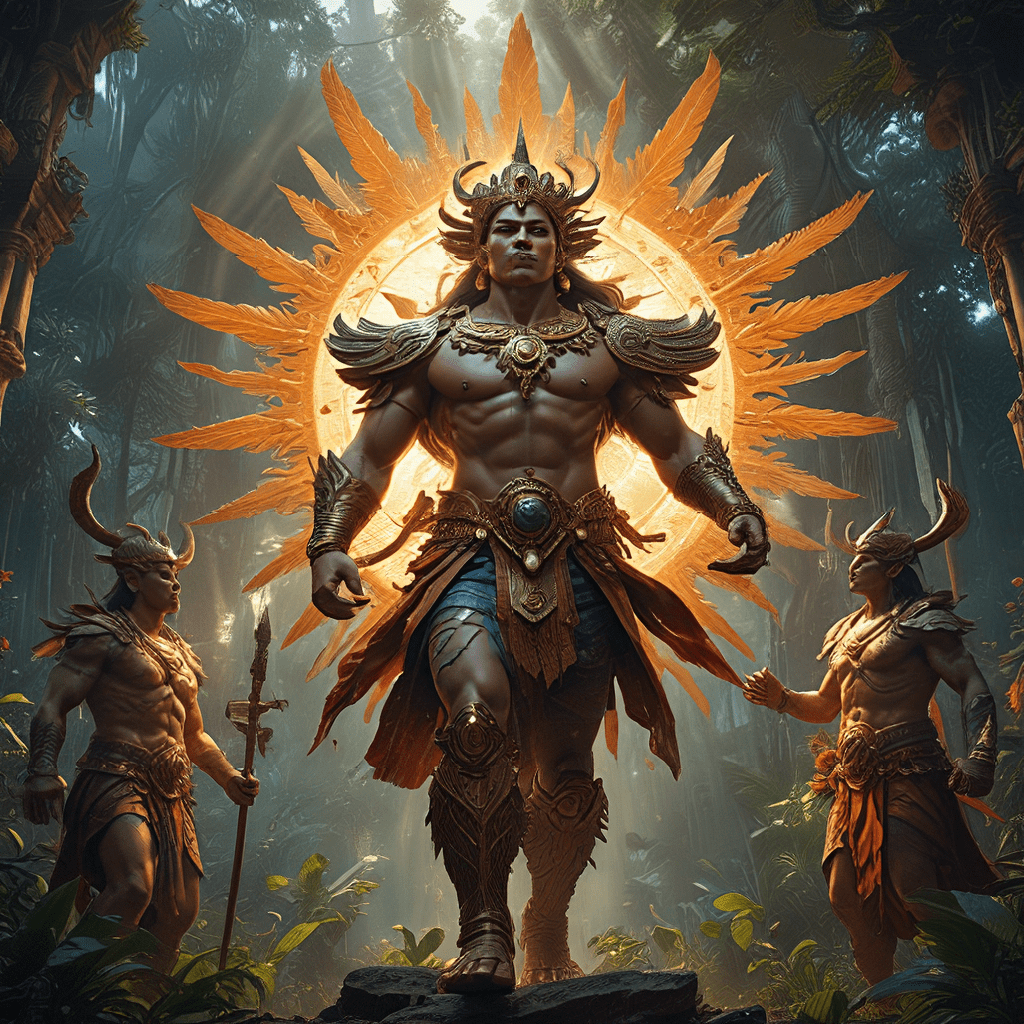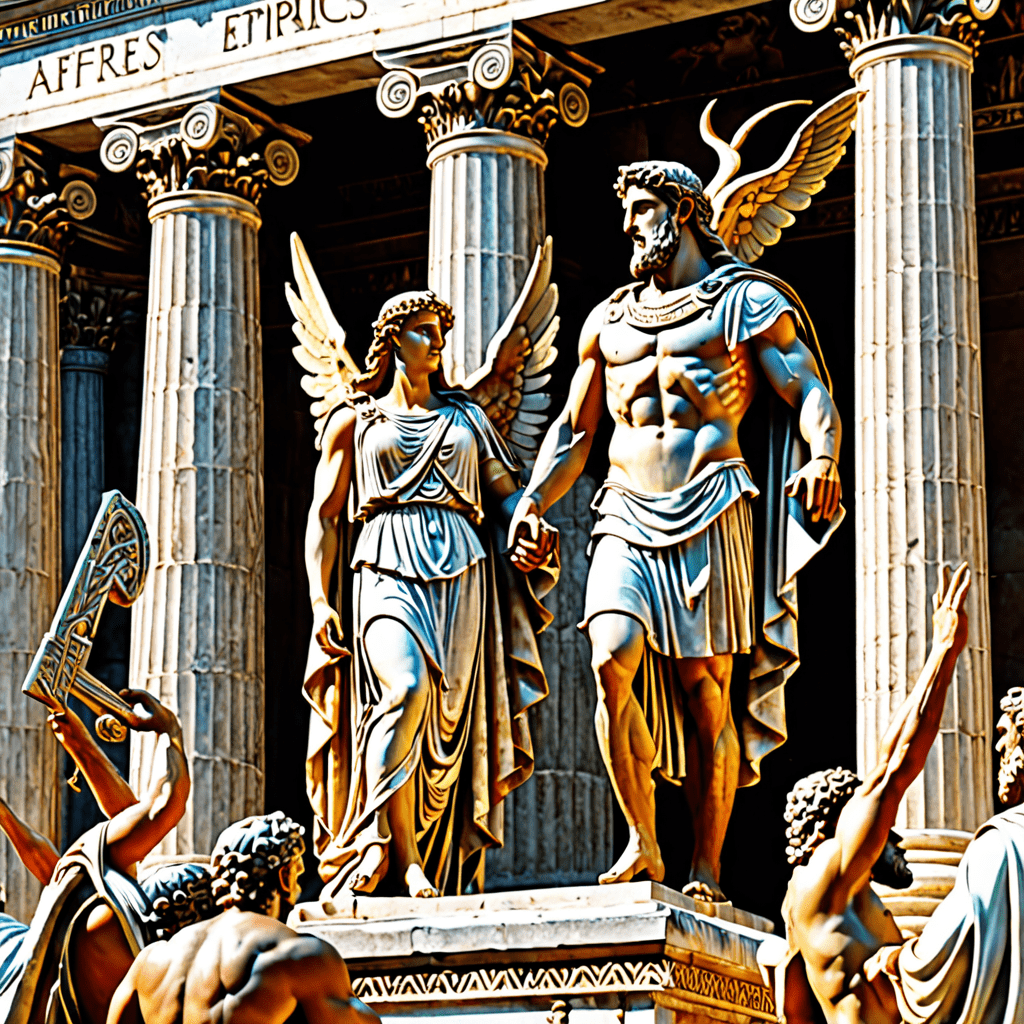Filipino Mythology: A Tapestry of Supernatural Beings and Forces
The Philippines boasts a rich and diverse mythology, filled with vibrant tales of gods, spirits, and mythical creatures that have shaped the culture and beliefs of the Filipino people for centuries. This intricate tapestry of folklore reflects the close connection between the Filipino people and their environment, their reverence for the natural world, and their deep-seated beliefs in the supernatural. From the benevolent creator deity Bathala to the mischievous engkantos that inhabit the forests and mountains, Filipino mythology offers a fascinating glimpse into the spiritual foundation of Philippine culture.
The Cosmic Landscape: A Universe of Spirits and Deities
Filipino mythology paints a vivid picture of a universe teeming with supernatural beings and forces. The cosmos is not merely a physical space but a vibrant realm populated by deities, spirits, and ancestral souls. These beings play a significant role in everyday life, influencing natural phenomena, impacting human affairs, and shaping the destiny of individuals and communities. The Filipino belief system encompasses a world where the sacred and the secular are intertwined, where the physical and spiritual realms constantly interact.
Bathala: The Supreme Deity and the Origins of Creation
At the heart of Filipino mythology stands Bathala, the supreme deity and the creator of the universe. He is revered as the ultimate source of all life and the embodiment of power, wisdom, and justice. Bathala is often depicted as a wise and compassionate being, responsible for the creation of the earth, the sky, and all living things. His role in Filipino mythology is akin to that of a benevolent father figure who oversees the well-being of his creations. Some accounts depict Bathala as a solitary being, while others portray him as the leader of a pantheon of gods and goddesses.
The Pantheon of Gods and Goddesses: Guardians and Protectors
In addition to Bathala, Filipino mythology features a rich pantheon of gods and goddesses, each with their own distinct roles and responsibilities. These deities are associated with various aspects of nature, human affairs, and the cycle of life. Some prominent deities include:
- Lalahon: The goddess of fertility and agriculture, associated with the abundance of the harvest.
- Maganda: The goddess of beauty, grace, and elegance.
- Silayan: The god of light, prosperity, and good fortune.
- Apolaki: The god of the sun and war, revered for his strength and courage.
- Mayari: The goddess of the moon, known for her wisdom and healing powers.
These deities serve as guardians and protectors, dispensing blessings and dispensing justice, while also acting as intermediaries between the human world and the spiritual realm.
The Realm of Spirits: Engkantos, Diwata, and Other Supernatural Beings
Filipino mythology is also home to a diverse array of spirits and supernatural beings, each with their own unique characteristics and powers. These beings play a significant role in shaping the beliefs and practices of the Filipino people. Here are some notable examples:
- Engkantos: These spirits inhabit the forests, mountains, and bodies of water, often depicted as beautiful and alluring beings. They are known for their capricious nature and their ability to grant favors or inflict curses.
- Diwata: These are benevolent spirits associated with nature, often residing in trees, mountains, or waterfalls. They are known for their beauty, wisdom, and their ability to protect humans from harm.
- Tikbalang: These are mischievous and trickster spirits often depicted as half-human, half-horse creatures. They are known for their pranks and their affinity for leading travelers astray.
- Aswang: These are shapeshifting creatures that are often depicted as evil and predatory. They are known for their ability to transform into animals or to feed on human flesh.
These spirits play an important role in shaping folk beliefs and practices, influencing the way Filipinos interact with the natural world and their understanding of the supernatural.
Forces of Nature: Spirits of the Elements and the Ancestral Realm
Filipino mythology recognizes the power of nature and the interconnectedness of all living things. Spirits are associated with the elements—earth, air, fire, and water—and are believed to influence the natural world and impact human lives.
- The spirits of the earth (diwata ng lupa) are associated with mountains, caves, and forests. They are believed to protect the land and its inhabitants, and their favor is sought for good harvests and abundant resources.
- The spirits of the air (diwata ng hangin) are linked to the winds, storms, and weather patterns. They are responsible for bringing rain and sunshine, and their wrath can unleash powerful storms.
- The spirits of fire (diwata ng apoy) are often associated with volcanoes and are seen as powerful and unpredictable forces. They symbolize both creation and destruction, and their presence is often viewed with a mix of awe and fear.
- The spirits of water (diwata ng tubig) reside in rivers, lakes, and oceans. They are believed to influence the tides, currents, and the abundance of fish. They are also linked to healing and purification.
Beyond the elements, Filipino mythology also acknowledges the importance of the ancestral realm and the spirits of the deceased (kaluluwa). These spirits are believed to watch over their families and communities, and their blessings are sought for protection and guidance. Filipinos often honor their ancestors through rituals and offerings, seeking their favor and guidance in life's journey.
Myths of Creation and Origin: Explaining the World and Humanity
Filipino mythology is rich with stories that explain the origins of the world, humanity, and the natural phenomena that surround us. These stories offer insights into the values, beliefs, and cultural practices of the Filipinos. Here are some of the most prominent creation myths:
- The Myth of Bathala and the Creation of the World: One of the most prominent creation myths tells the story of Bathala, the supreme deity, who created the universe from chaos. He shaped the earth, created the sky, and brought forth life. This myth emphasizes the role of a benevolent creator deity who oversees the world and its inhabitants.
- The Myth of the First Humans: Another common myth describes the creation of the first humans from clay. These stories vary, but often depict the human form being molded by a deity or spirit. This highlights the importance of creation and the connection between humans and the divine.
- Myths of the Origin of Natural Phenomena: Filipino mythology also includes stories that explain the origins of natural phenomena, such as the sun, the moon, the stars, and the seasons. These myths often feature deities or spirits who control these elements, highlighting the belief that the natural world is imbued with spiritual significance.
These myths offer a rich tapestry of explanations for the world around us, providing a shared cultural understanding of the origins of life, the power of nature, and the interconnectedness of all things.
The Role of Mythology in Filipino Culture: Folklore, Ritual, and Everyday Life
Filipino mythology permeates all aspects of Filipino culture, shaping their values, beliefs, and everyday practices. Folklore, rituals, and traditions are interwoven with mythical narratives, reflecting the deep connection between the spiritual and the secular.
- Folklore and Storytelling: Mythical stories are passed down through generations through folklore, oral traditions, and songs. These stories serve both as entertainment and as a way to transmit cultural knowledge, moral lessons, and beliefs.
- Rituals and Festivals: Many Filipino rituals and festivals are based on myths and legends. These events are often celebrated to appease the spirits, honor the deities, and seek blessings for good health, prosperity, and bountiful harvests.
- Everyday Beliefs and Practices: Mythological beliefs influence everyday life, impacting interactions with nature, the treatment of the dead, and the observance of rituals and traditions. People may avoid certain places or activities out of respect for the spirits or to avoid offending them.
Filipino mythology continues to shape the cultural identity of the Filipinos, providing a rich tapestry of stories, beliefs, and practices that connect them to their ancestors, their environment, and their spiritual heritage.
Theological Theories of Filipino Mythology: Animism, Polytheism, and Shamanism
Scholars have proposed various theological theories to explain the complex nature of Filipino mythology. Some common theories include:
- Animism: This theory suggests that Filipino mythology reflects a belief in the existence of spirits in all things, both living and non-living. This belief emphasizes the sacredness of nature and the interconnectedness of all life.
- Polytheism: This theory posits that Filipino mythology is polytheistic, meaning it involves the worship of multiple deities. The pantheon of gods and goddesses represents different aspects of nature and human life, reflecting a complex system of belief.
- Shamanism: This theory highlights the role of shamans or spiritual healers in Filipino culture, who are believed to have the ability to communicate with the spirit world and to channel spiritual energies. This suggests a strong belief in the power of the supernatural and the interconnectedness of the physical and spiritual realms.
These theories provide a framework for understanding the complex religious beliefs and practices that underpin Filipino mythology. However, it's important to note that these theories are not mutually exclusive, and Filipino mythology often reflects a blend of these different concepts.
Modern Interpretations and Representations: Philippine Mythology in Contemporary Art and Literature
Filipino mythology continues to inspire and influence contemporary artists and writers. Modern interpretations of myths and legends provide fresh perspectives on traditional stories, exploring themes of cultural identity, social justice, and environmental awareness.
- Art and Visual Culture: Contemporary Filipino artists draw inspiration from mythological themes and imagery. Their works explore the beauty and complexity of Filipino mythology, reflecting on traditional beliefs and practices within a modern context.
- Literature and Performance: Filipino writers weave mythical narratives into their novels, plays, and poems, reinterpreting traditional stories and creating new characters and scenarios. These works often explore the intersection of mythology and contemporary issues, reflecting on the enduring relevance of these stories.
Through contemporary art and literature, Filipino mythology remains a vital source of inspiration and a powerful means of exploring cultural identity and the complexities of the human experience.
FAQ
Q: What is the most important deity in Filipino mythology?
A: The most important deity in Filipino mythology is Bathala, the supreme creator god who is responsible for the creation of the universe, humans, and all living things.
Q: What are some common mythical creatures in Filipino mythology?
**A: **Some common mythical creatures in Filipino mythology include:
- Engkantos: Spirits that inhabit the forests, mountains, and bodies of water.
- Diwata: Benevolent spirits associated with nature.
- Tikbalang: Mischievous and trickster spirits often depicted as half-human, half-horse creatures.
- Aswang: Shapeshifting creatures often depicted as evil and predatory.
Q: How does Filipino mythology reflect the Filipino people's relationship with nature?
A: Filipino mythology reflects a deep respect for nature and a belief that spirits inhabit all aspects of the natural world. These beliefs influence the way Filipinos interact with their environment, from the respect they show for trees and mountains to the rituals they perform to appease the spirits of the elements.
Q: How does Filipino mythology influence contemporary Philippine culture?
A: Filipino mythology continues to influence contemporary Philippine culture through various forms of art and literature. Artists and writers draw inspiration from traditional myths and legends, reinterpreting them and exploring their relevance in a modern context.



